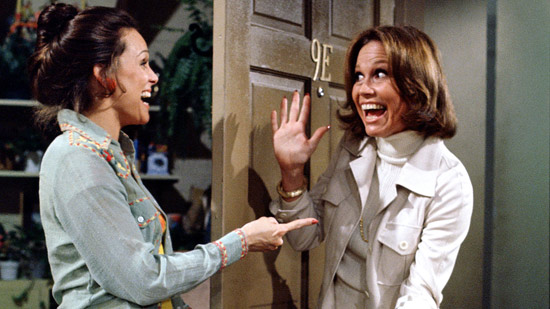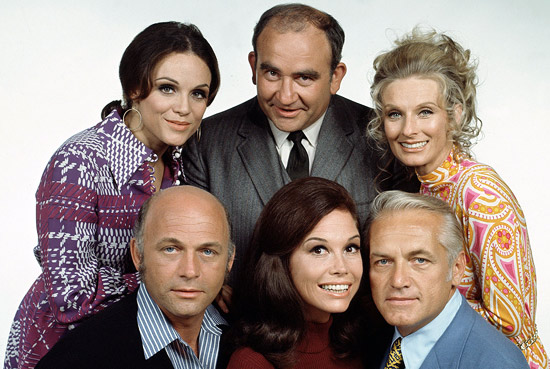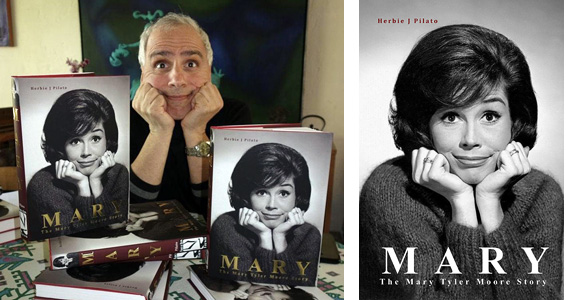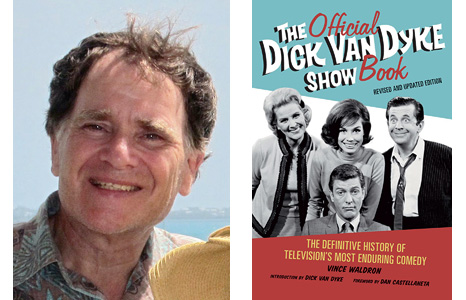“The Mary Tyler Moore Show opened the floodgates for the kind of grown-up TV comedies that would thrive in the 1970s, and beyond. Although Mary’s show had little in common with M*A*S*H, All in the Family, or Barney Miller, it’s hard to imagine any of those breakthrough sitcoms getting a green light had The Mary Tyler Moore not proven to the TV networks that it was possible to attract a sizable audience to intelligent, risk-taking television shows — that good TV was, in fact, a viable business model.” — Vince Waldron, author of The Official Dick Van Dyke Show Book
The Digital Bits and History, Legacy & Showmanship are pleased to present this retrospective commemorating the golden anniversary of the broadcast premiere of The Mary Tyler Moore Show, the Emmy-winning and multi-spinoff-inspiring television series starring Mary Tyler Moore (The Dick Van Dyke Show, Ordinary People) as Mary Richards that ran on CBS from 1970 to 1977.
The series — created by James L. Brooks (Terms of Endearment, Broadcast News) and Allan Burns (A Little Romance, Just Between Friends) and featuring the memorable supporting cast of Edward Asner as Lou Grant, Valerie Harper as Rhoda Morgenstern, Gavin MacLeod as Murray Slaughter, Ted Knight as Ted Baxter, Cloris Leachman as Phyllis Lindstrom, Georgia Engel as Georgette Franklin Baxter, and Betty White as Sue Ann Nivens — premiered 50 years ago, and for the occasion The Bits features a Q&A with a pair of classic television historians who reflect on the series’ appeal, impact and legacy five decades after its debut. [Read on here...]
The participants are (in alphabetical order)…
Herbie J Pilato is the author of Mary: The Mary Tyler Moore Story (Jacobs Brown Press, 2019) and the host of Amazon Prime’s Then Again with Herbie J Pilato.
Vince Waldron is the author of The Official Dick Van Dyke Show Book (Chicago Review Press, 2011) and Classic Sitcoms: A Celebration of the Best in Prime-Time Comedy (Macmillan, 1987; revised edition Silman-James Press, 1998).
The interviews were conducted separately and have been edited into a “roundtable” conversation format.
Michael Coate (The Digital Bits): How do you think The Mary Tyler Moore Show should be remembered on its 50th anniversary?
Herbie J Pilato: The Mary Tyler Moore Show was a ground-breaking show on several levels…in content…in execution…and with regard to social and cultural impact and influence. While previous female-centric sitcoms like Private Secretary (aka The Anne Southern Show) and That Girl certainly celebrated the independent career woman, The Mary Tyler Moore Show which, technically, was titled just Mary Tyler Moore, took things to the next level. It arrived on screen at a time when the Women’s Liberation Movement was just beginning its full swing. The show never set out to be the voice of female empowerment, but that’s how it turned out. The character of Mary Richards, who worked in the newsroom at the fictional WJM-TV in Minneapolis, was not presented with any conscious decision to stand for female rights…she was just living her life and doing her job to the best of her ability. Whatever came from that was an organic development of the times…and the way Mary Tyler Moore played the character…with utter charm, intelligence and sensibility, just simply brought it all home for the TV viewer in the most likable way. When it comes to TV and likability, you’d be hard-put to find a more ideal representative of that than Mary Tyler Moore on The Mary Tyler Moore Show. And the show’s amazing supporting cast, led by Ed Asner as Lou Grant, Mary’s boss at the TV station, where she moves to start a new life after breaking up with her boyfriend, Valerie Harper as Rhoda Morgenstern, who becomes Mary’s best friend, after a shaky start and struggle for the same apartment in their building. Cloris Leachman as Phyllis Lindstrom, Mary’s landlord. Ted Knight as the egotistical WJM TV news anchorman Ted Baxter. Gavin MacLeod as the affable Murray Slaughter, MJM’s newswriter. Betty White as the self-involved Sue Ann Niven’s, WJM-TV’s homemaking show host, and Georgia Engel, Ted’s “Gomer-Pyle”-like girlfriend-turned-wife. Each of these characters contributed to the essence and strength of what The Mary Tyler Moore Show ultimately became. Of course, the cast also had a terrific team of writers as show creators James L. Brooks and Allan Burns, and story editor Treva Silverman. Round that out with directors like Jay Sandrich, and you’ve got a win-win-win scenario for a history-making television hit.
Vince Waldron: With great fondness. Like an old friend who you may not have seen in a while, but who holds a special place in your heart. I suppose that’s because I think of the show’s cast like old friends — no matter how long it’s been since we’ve been together, whenever I tune in the show, I instantly feel right at home.

Coate: Can you remember when you first saw the show?
Pilato: Not really….because its place in my memory and in my heart just kind of melds together with the joy of TV watching on a Saturday night through the 1970s, along with All in the Family, M*A*S*H, Bridget Loves Birney, The Bob Newhart Show, and The Carol Burnett Show. But The Mary Tyler Moore Show actually debuted on a Tuesday, and struggled to find its audience until it became a staple of Saturday night.
Waldron: I was in high school, a time when you’re supposed to be too cool to watch television. But I was willing to make an exception for Mary Tyler Moore, who I’d grown up watching play Laura Petrie on The Dick Van Dyke Show. I couldn’t wait to get reacquainted with this icon of my childhood, who quickly became an icon of my teen years in this entirely different role.
Coate: In what way is The Mary Tyler Moore Show significant?
Pilato: The Mary Tyler Moore Show is ground-breaking on so many levels. Not only did it pave the way for female empowerment, right alongside the women’s liberation movement of the 1970s, but it introduced a new way of storytelling for situation comedies. Because of The Mary Tyler Moore Show, sitcoms were forced to reach for and rise to a new standard. The show introduced a new way to present humor, showcasing characters that were flawed, human and real. TV sitcom characters became more textured, following in the path set forth by Mary Richards, Lou Grant, Rhoda Morgenstern, etc. There was more depth to the way characters were written and portrayed on TV. The characters on The Mary Tyler Moore Show did not just act funny, or say funny things, tell jokes or make quippy remarks. The humor of who they were and what they shared was more realistic, coming from the actual situation in which they were placed or found themselves.
Waldron: The show was a groundbreaker, the first prime-time comedy to reflect a distinctly female point of view.







